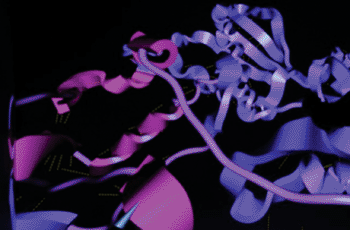Pharmacoperone Treatment Restores Proper Function to Misfolded Proteins
By LabMedica International staff writers
Posted on 23 Dec 2013
A novel class of low molecular weight compounds has been identified that serves as a sort of scaffolding to restore the structure of misfolded proteins – such as those that characterize neurodegenerative diseases like Alzheimer's and Parkinson's – and allows the cell to return them to their site of normal activity.Posted on 23 Dec 2013
Many diseases result from genetic mutations that cause protein misfolding. It had been thought previously that misfolded proteins were intrinsically nonfunctional. Recent studies have found, however, that the cell's "quality control system" misroutes such proteins within the cell—most frequently to the endoplasmic reticulum (ER)— and they cease to function only because they are not situated in the correct location.

Image: Drugs called pharmacoperones can fix the problems that occur when proteins misfold (Photo courtesy of Idaho National Laboratory).
Investigators at Oregon Health & Science University (Portland, USA) have been working with a class of compounds known as pharmacological chaperones (or pharmacoperones, from "protein chaperone"). These small molecules enter cells and serve as molecular scaffolding in order direct misfolded mutant proteins to fold and route correctly within the cell.
Pharmacoperones correct the folding of misfolded proteins, allowing them to pass through the cell's quality-control system and become correctly routed. Since mutations often cause disease by causing misfolding and misrouting, pharmacoperones are potentially therapeutic agents, since they are able to correct this defect.
In a paper published in the December 9, 2013, online edition of the journal Proceedings of the National Academy of Sciences of the United States of America (PNAS) the investigators described the use of a pharmacoperone to treat hypogonadotropic hypogonadism (failed puberty associated with low or apulsatile luteinizing hormone) caused by the recessive GnRHR E90K mutation in a mouse model.
They found that pulsatile pharmacoperone therapy restored E90K from ER retention to the plasma membrane, concurrently with responsiveness to its natural ligand, gonadotropin releasing hormone, and an agonist that is specific for the mutant. Spermatogenesis, proteins associated with steroid transport and steroidogenesis, and androgen levels were restored in mutant male mice following pharmacoperone therapy.
"These findings show how valuable laboratory animals are in identifying new treatments for human disease," said senior author Dr. P. Michael Conn, professor of physiology and pharmacology, cell biology and development, and obstetrics and gynecology at the Oregon Health & Science University. "We expect that these studies will change the way drug companies look for drugs, since current screening procedures would have missed many useful pharmacoperone drugs. The opportunity here is going to be enormous because so many human diseases are caused by misfolded proteins. The ability of these drugs to rescue misfolded proteins and return them to normalcy could someday be an underlying cure to a number of diseases. Drugs that act by regulating the trafficking of molecules within cells are a whole new way of thinking about treating disease."
Related Links:
Oregon Health & Science University














